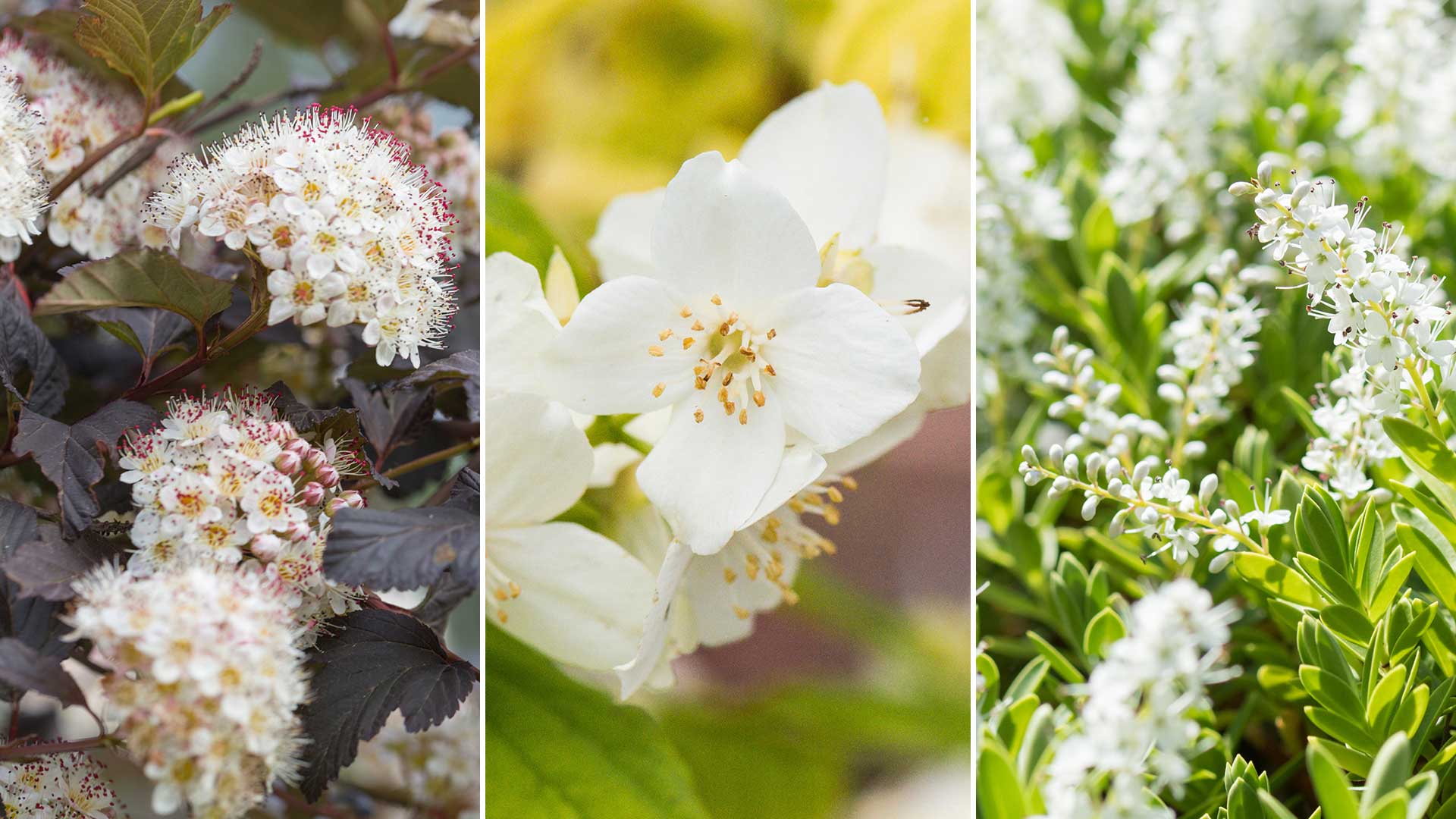
Fast-growing shrubs bring long-lasting structure to the garden, unlike annual bloomers, which last just one growing season. With the right care they will establish quickly, and can be used as hedging, as ornamental specimens in the border, or even as container plants.
From fragrant flowering show-stoppers that are good for wildlife to varieties with colour-changing leaves, there's a shrub to suit any garden trend. Tall, evergreen ones are valuable for shade, shelter, or screening, while some deciduous shrubs will dazzle in winter with their vibrant bark.
I asked gardening experts for their recommendations for fast-growing shrubs, and they shared their insights below. You'll also find useful tips for looking after them, to help them establish beautifully in your space.
Update your outdoor space with these 8 fast-growing shrubs
While some shrubs are more drought-tolerant than others, most will need proper watering regularly as they get established. Mulching around the base will help the soil retain moisture and keep weeds at bay, but it's generally recommended to keep mulch away from the main stem to avoid the risk of rot and disease.
1. Photinia fraseri "Red Robin"
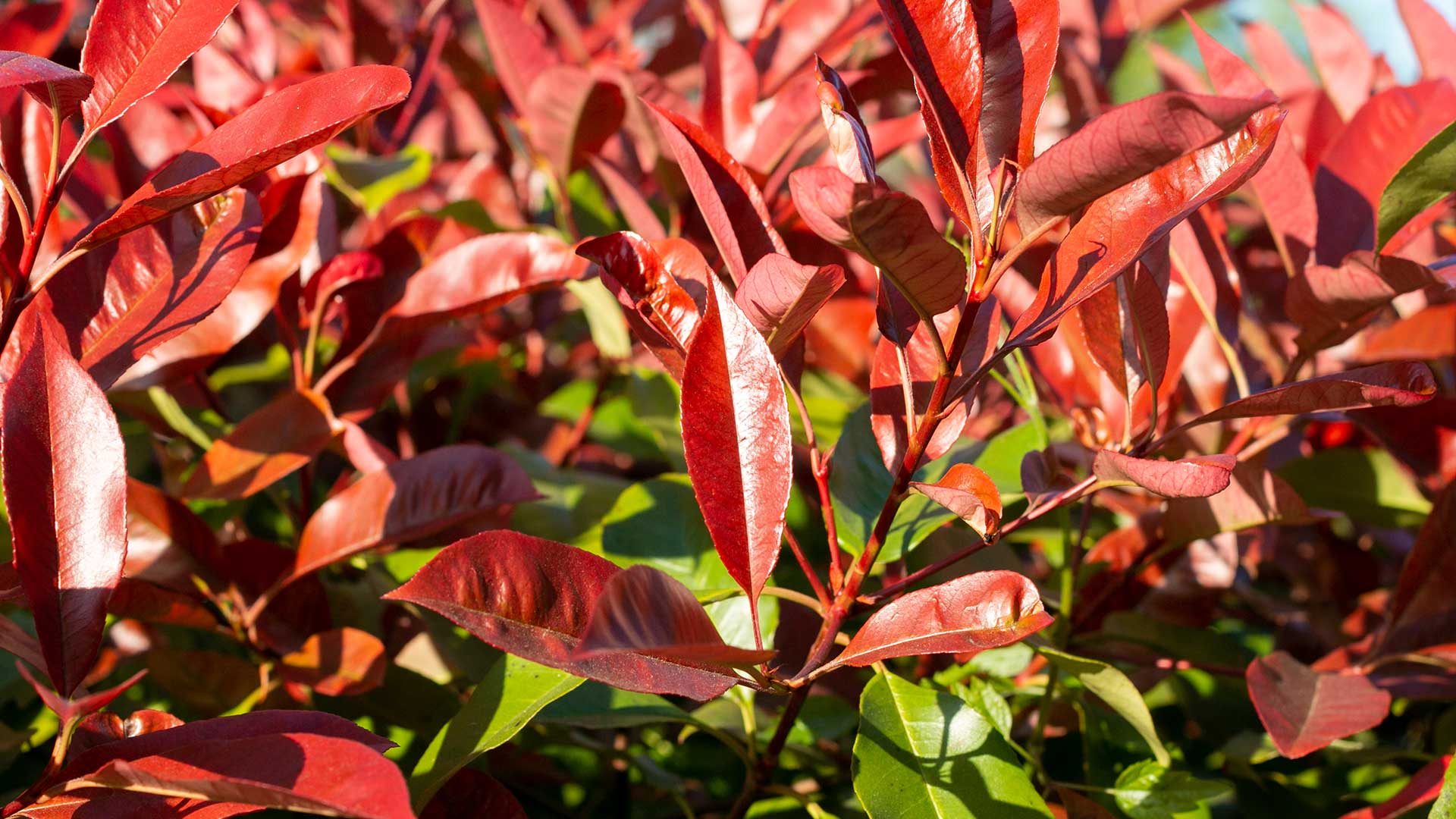
Emma Fell, head of horticulture at Hillier, recommends Photinia fraseri “Red Robin” for our list of fast-growing shrubs. “This bold, upright, evergreen shrub is known for its vibrant red new growth in spring, which gradually matures to a glossy green,” she says.
“It responds well to pruning, making it a striking alternative to traditional hedging plants like cherry laurel," Emma continues. "You can trim it into a formal hedge or allow a more relaxed, natural shape.” When left to grow to its full size, “Red Robin” can reach four to five metres tall, she adds. You can buy Photinia fraseri "Red Robin" from Hillier.
If you’re short on space, Emma suggests opting for “Little Red Robin”, highlighting how it offers the same vivid colour and interest in a compact form and is ideal for planting in containers or in small borders. As a bonus point, both types also produce white flowers in spring when planted somewhere sunny.
2. Buddleia davidii
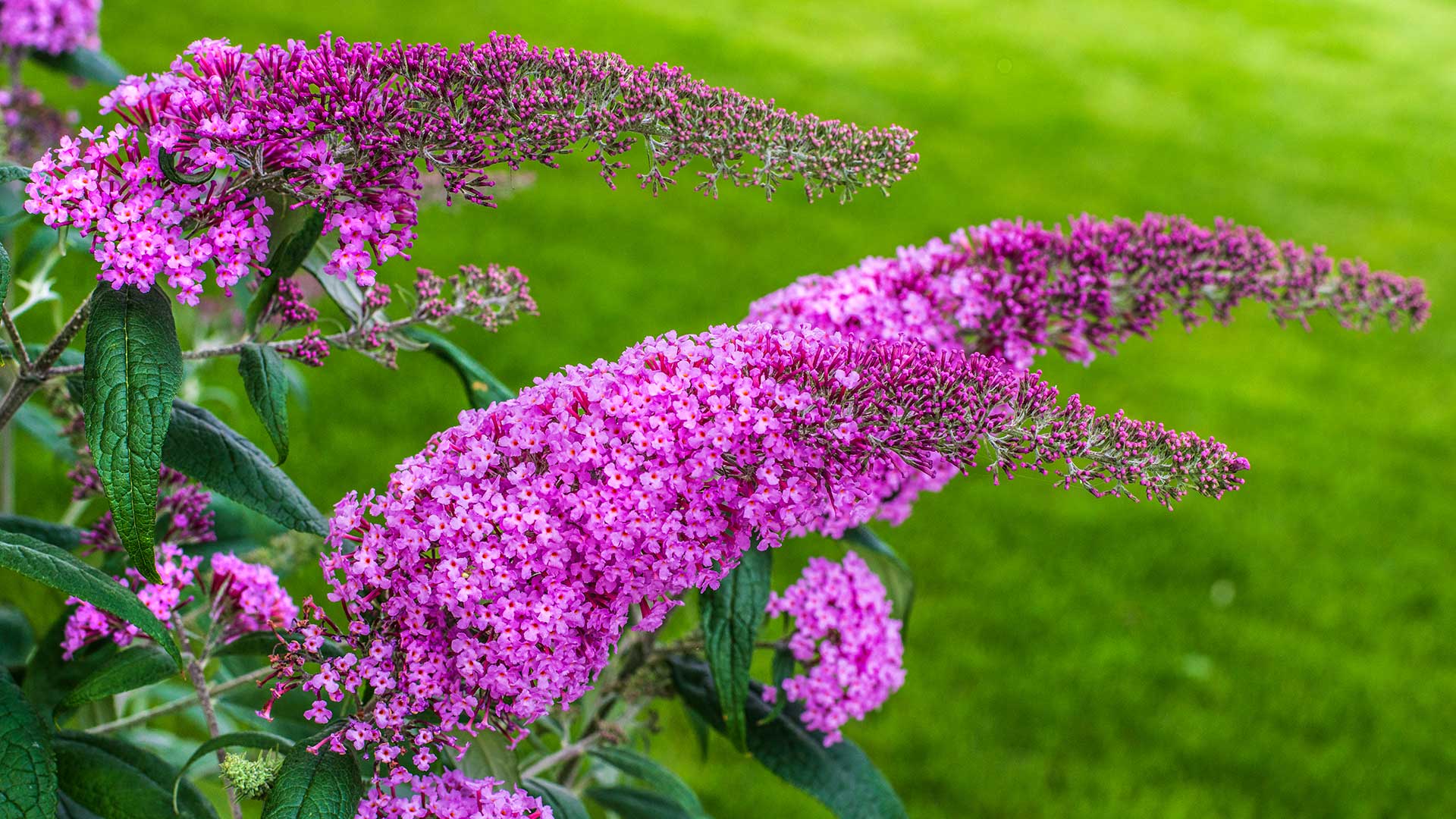
“This shrub, commonly known as ‘butterfly bush’, is known for its long panicles of deep purple flowers,” says Chris Bonnett of GardeningExpress. “Not only is its colour striking, but it's also a must-have for those looking to create a wildlife-friendly garden, as it's great for attracting butterflies, bees and other pollinators.
“Butterfly bush blooms from mid-summer to early autumn, is easy to grow, and low-maintenance,” he continues. He says it thrives in well-drained soil and full sun – “too much shade can hinder growth and lead to fewer flowers.”
Chris recommends pruning these shrubs hard in early spring to encourage fresh stems and also to deadhead the plants regularly.
For a classic purple hue, try “Ile de France”, available from GardeningExpress, while “White Profusion”, also from GardeningExpress, complements the quiet luxury garden trend.
3. Euphorbia characias subsp wulfenii
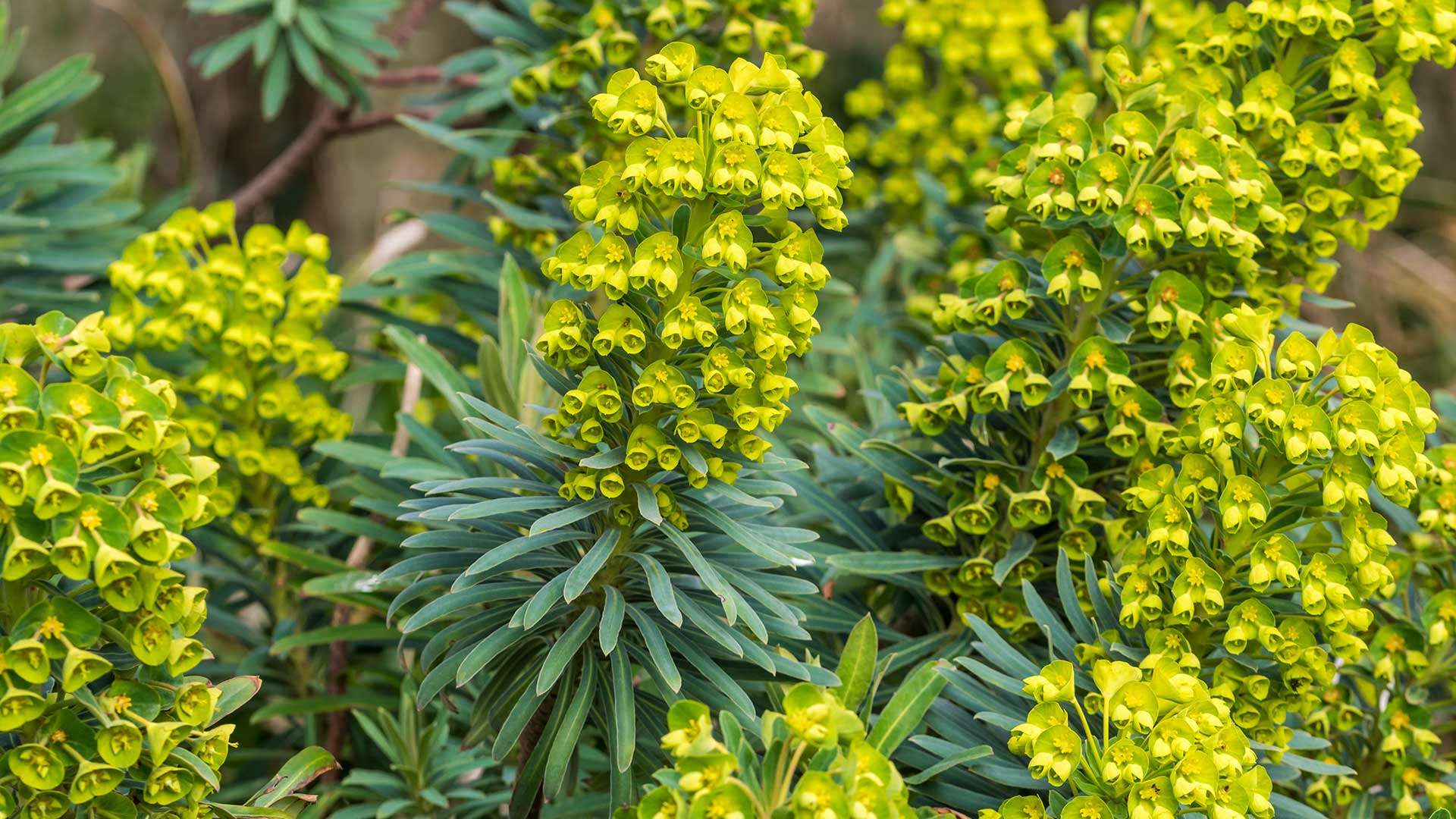
“Number one on our list is Euphorbia characias subsp wulfenii, a native of the Mediterranean area – so well suited to the climate we are experiencing just now,” says Dickon Harding, gardens and landscape manager at Raby Castle.
“It has been used to great effect here by renowned garden designer Luciano Giubbilei. Planted in long drifts, it reaches over a metre in height with magnificent yellow-green whorls of flowers, the foliage being a beautiful glaucous green.” Its striking blooms make it a good plant for pollinators.
Choose a planting position that has full sun and well-draining soil to help it grow at its best. Although it’s a shrub, Dickon recommends treating each individual stem as a biennial – “once a stem has flowered in its second year, cut it off so that you have continual fresh growth.” Remember to wear gloves when handling this plant to protect your skin from the toxic sap (and keep it safely out of reach of pets and children).
Euphorbia characias subsp. wulfenii plants are available from Crocus in a range of pot sizes.
4. Common ninebark
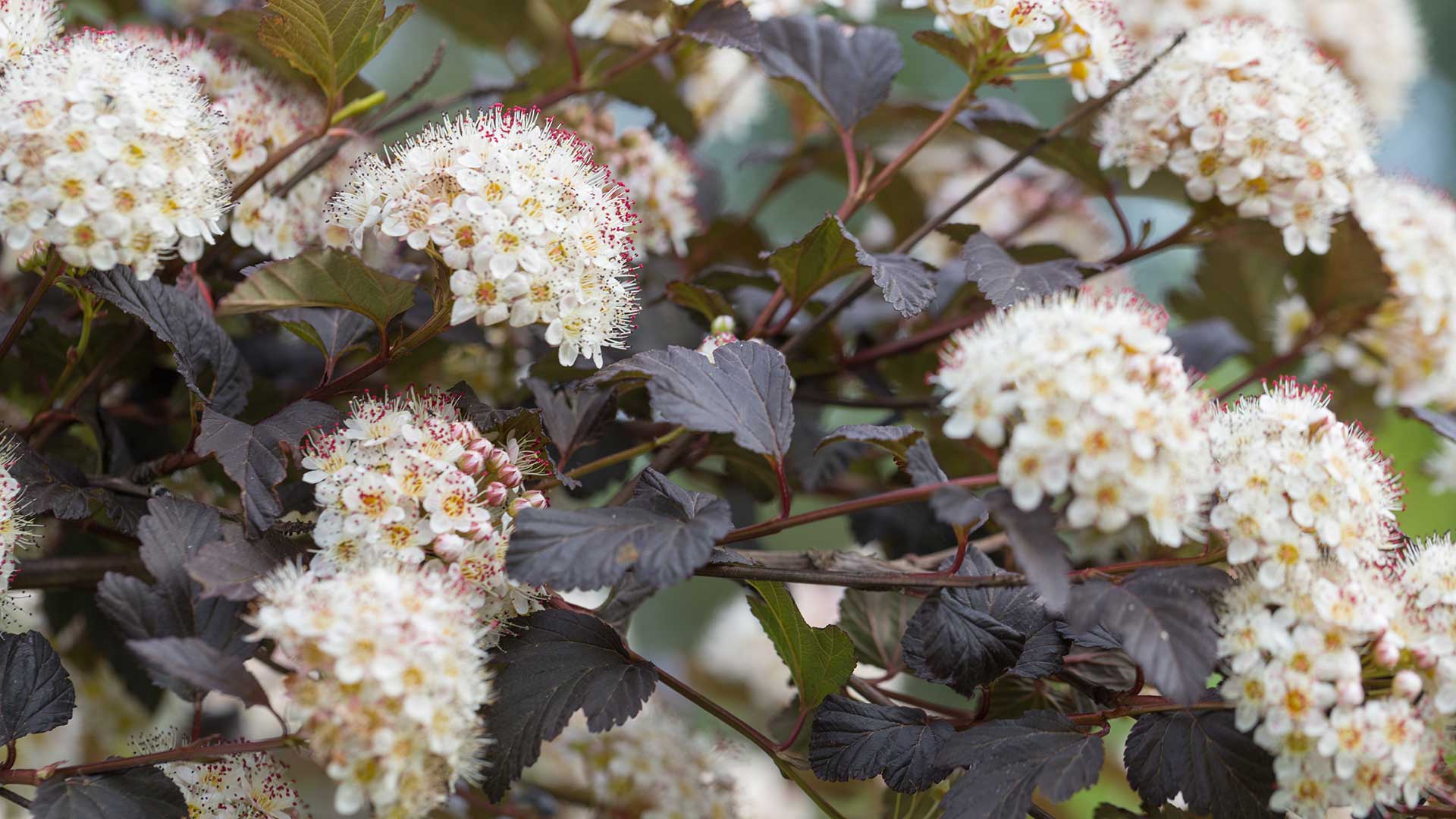
"For a beautiful display, look no further than Physocarpus opulifolius, also known as common ninebark," says Emma. "Physocarpus opulifolius is a striking deciduous shrub that brings bold colour and texture to the garden."
"Known for its dramatic foliage, this hardy plant comes in a range of eye-catching shades – from the deep burgundy tones of ‘Diabolo’ and ‘Lady in Red’ [available from Hillier] to the bright golden leaves of ‘Dart’s Gold’," she continues. "In early summer, it produces clusters of small pink or white flowers, which are followed by decorative seed heads that add extra seasonal interest."
According to Emma, these alluring plants are easy to grow in most soil types and are tolerant of exposed sites. It can be pruned to a shape or size to suit your space, she adds – "whether you’re after a neat, compact form or something a little more free-flowing."
5. Golden mock orange
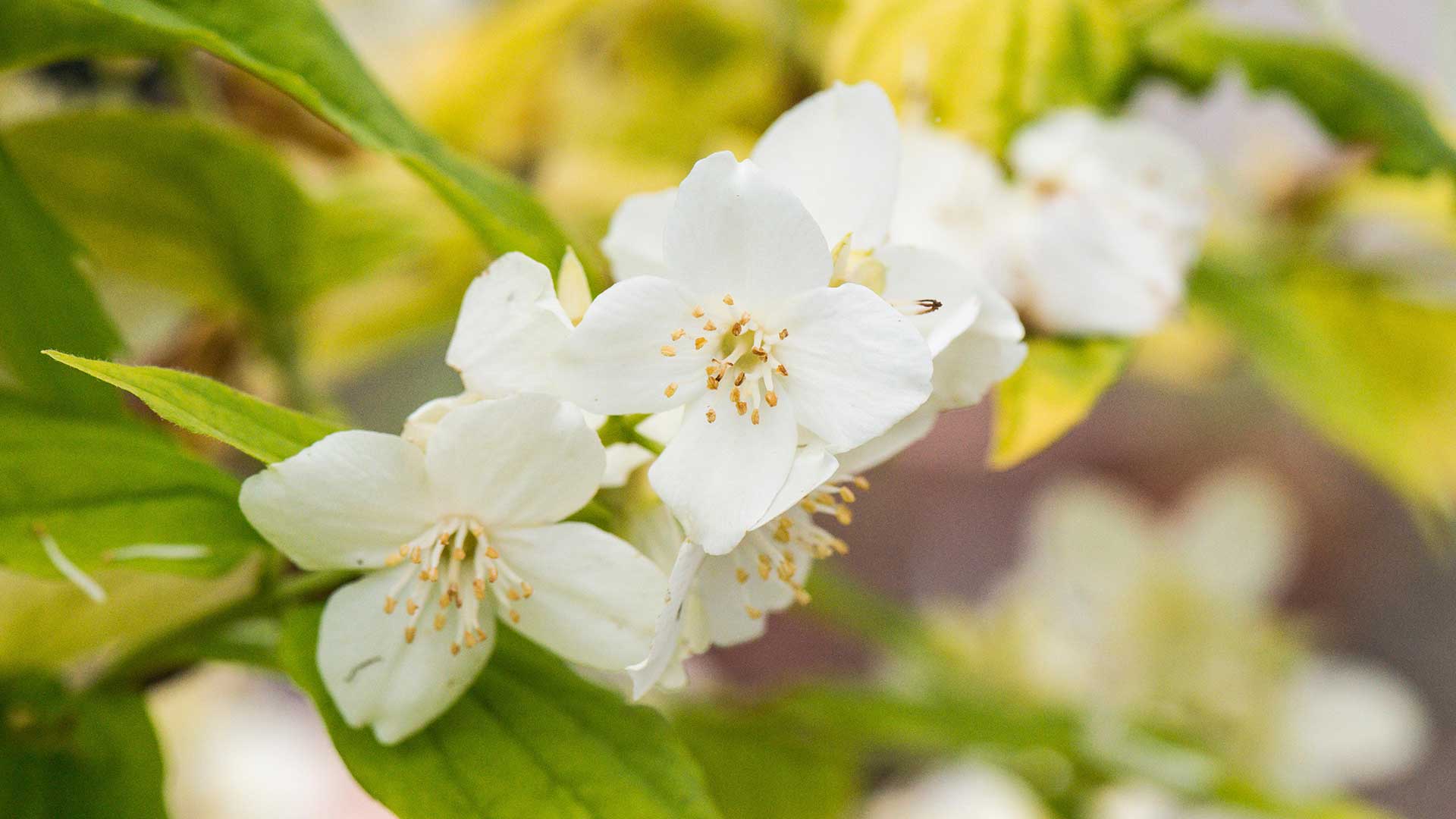
Chris also recommends the golden mock orange (available from GardeningExpress), for our list of fast-growing shrubs, which is also known as Philadelphus coronarius "Aureus". He highlights its white, orange-blossom-scented flowers throughout June and July, and how its bright yellow leaves become a greenish yellow as they mature.
"These shrubs look great as part of a border, and they can cope with poor and dry soil if need be," he continues. "Ideally, you’ll want to plant this in full sun. While it can handle some light shade, keep in mind that too much can reduce flowering. It can spread over time, so leave plenty of room around it to allow for good airflow." He also recommends growing these fragrant plants near a path or open window, so you can appreciate their scent.
In terms of pruning, Chris advises giving it a trim right after flowering, removing the oldest stems at the base to keep it well-shaped.
6. Cornus alba "Sibirica"
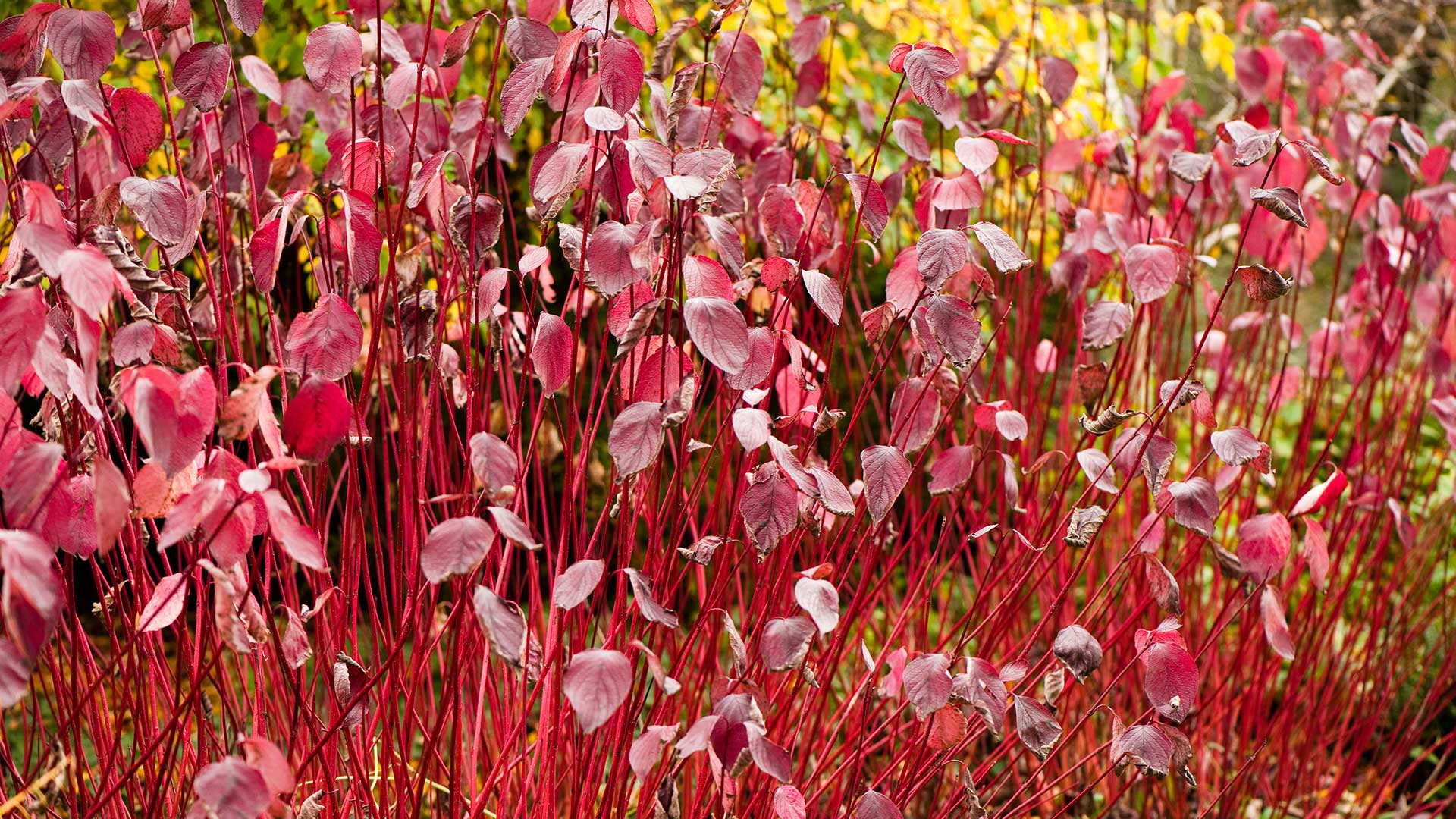
Also known as red-barked dogwood (and available from GardeningExpress), Chris says this shrub is perfect if you're after winter colour and a long-lasting display. "It’s versatile and can handle partial shade, and its vibrant and fiery red stems will make a statement in any garden."
Although it’s adaptable, Chris says it works best in moist and well-drained soil, adding that the red bark colour is brightest when grown in full sun. "When it comes to pruning, you’ll want to do this in late winter or early spring each year to promote new colourful shoots."
Why not consider some winter bedding plants for your outdoor space, too? That way, you'll have even more to admire during the colder months.
7. Hebe rakaiensis
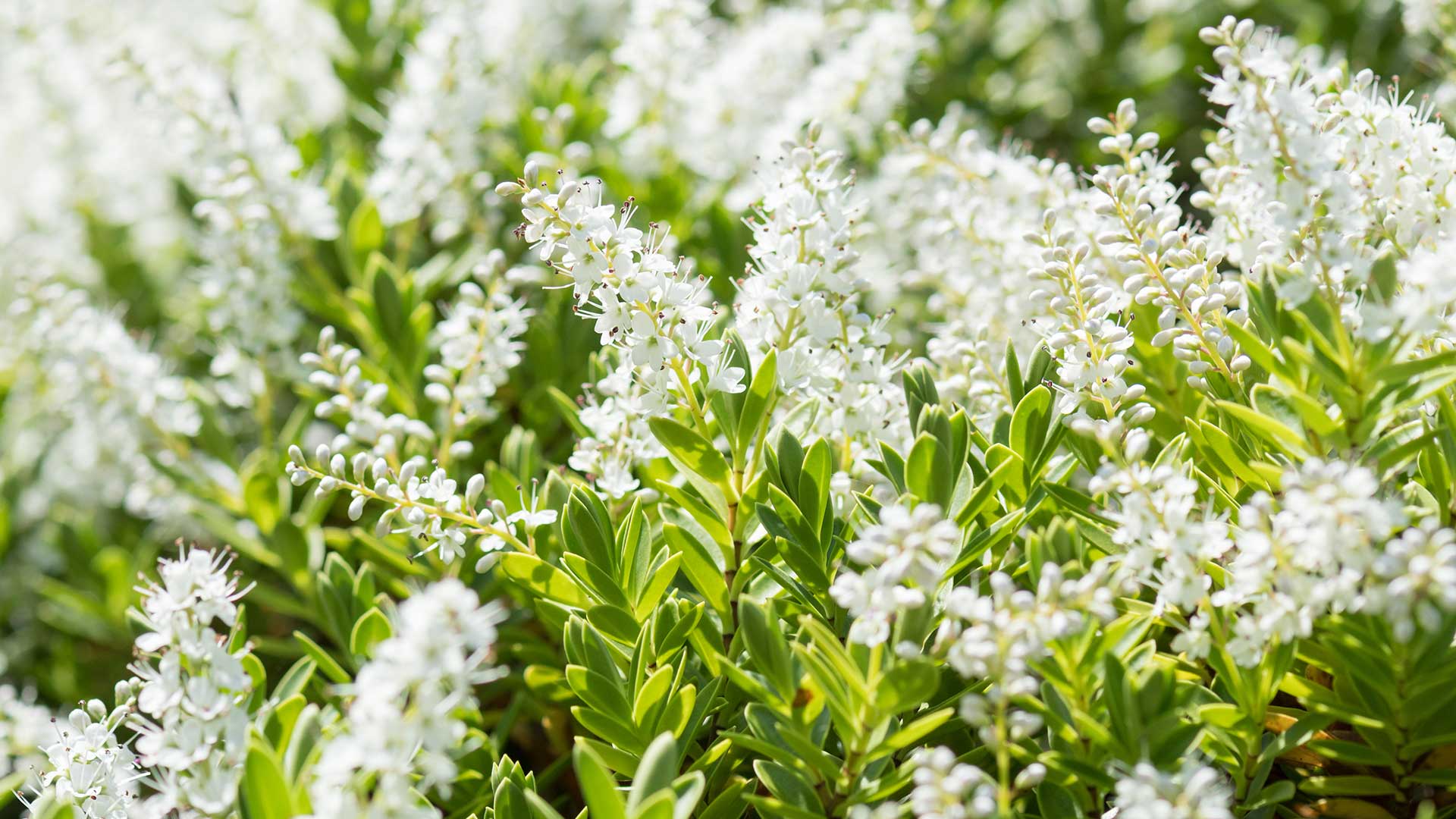
"Hebe rakaiensis is another great plant for pollinators – it forms a neat, compact mound very quickly that is covered in lovely white flowers from early summer," says Dickon. "Alistair Baldwin, who designed our landscapes beyond the Walled Gardens, has just planted many of these as they make such great contrasts with the looser perennials around them." They are also evergreen, offering year-round colour to a garden.
He highlights how these plants, also known as shrubby Veronica, are native to New Zealand, which has a similar climate to our own. "This makes them generally trouble-free, although any plants with such dense foliage can suffer from fungal diseases due to reduced airflow."
Ideally, plant this shrub in well-draining soil that gets either full sun or partial shade. It can work well as a rockery plant.
8. Hydrangea arborescens “Annabelle”
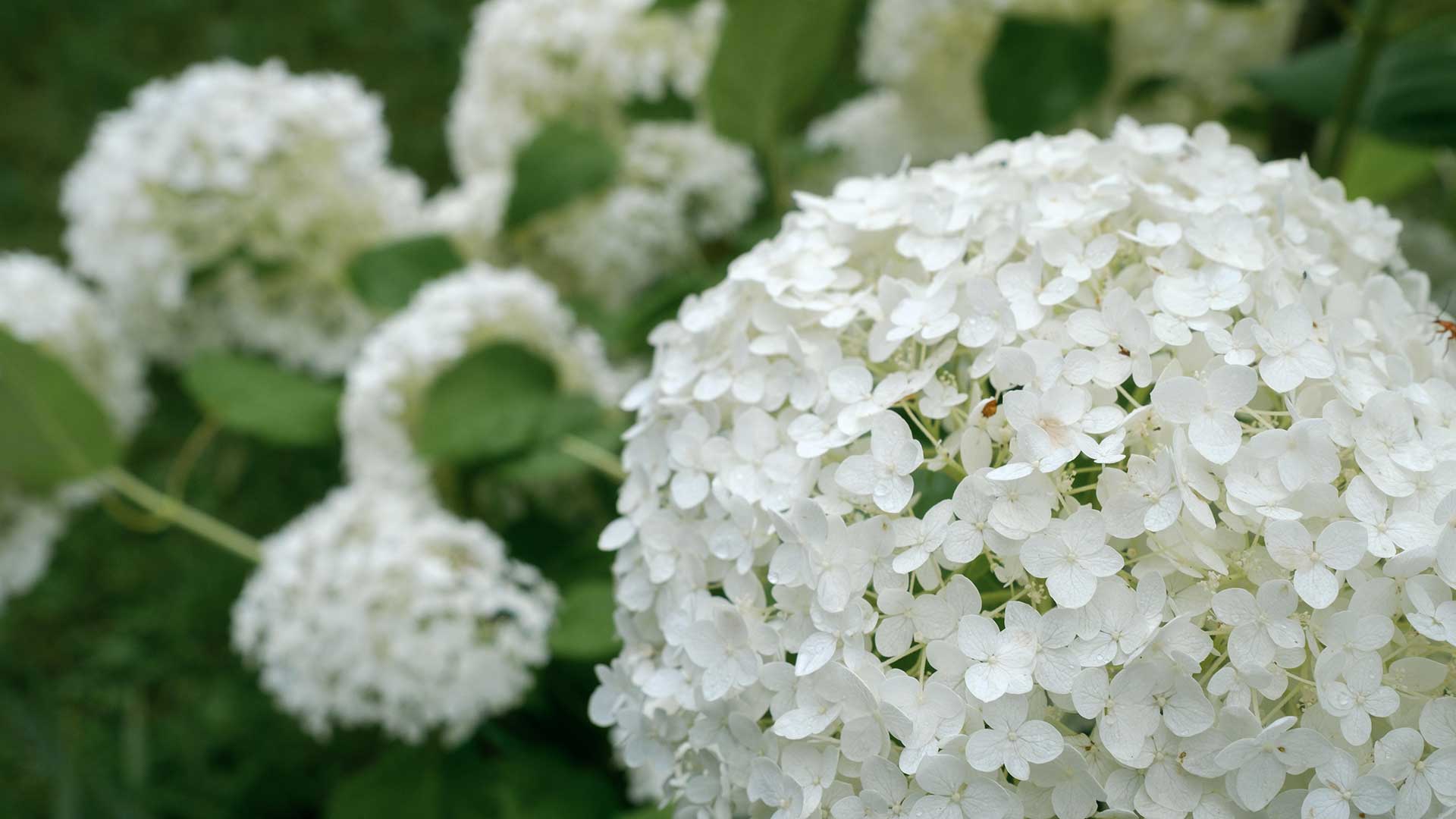
"Although the elegant quercifolia that fills our South border may be a bit slow for some, many hydrangeas are quick to grow and nearly as beautiful!" says Dickon. "Try Hydrangea arborescens “Annabelle” if you like huge, showy blooms. It has compact growth, but given a rich soil, it will quickly grow into a substantial plant."
"Annabelle" is available to buy from Crocus, and the flowers look just as gorgeous in the garden as they do cut for the vase. Our guides on when to plant hydrangeas and how to prune hydrangeas are well worth a read if you're considering this shrub for your space.
FAQs
What are some good fast-growing shrubs to create a hedge?
Hedges offer a natural way to divide spaces and create garden privacy, and are beneficial to wildlife, too. Jamie Shipley, gardening expert and managing director of Hedges Direct, says beech is one of the most popular hedging varieties.
"Although it’s not evergreen, the winter leaves will stay intact until the new growth is ready in spring, making it a great alternative to an evergreen hedge – and you’ll get the added advantage of beautiful red and golden autumn foliage," he says. "It’s also a relatively fast grower – approximately 30-60cm per year – and requires less maintenance than the more rapid growers, like Leylandii."
For a privacy hedge that protects against the elements, he suggests cherry laurel, an evergreen shrub with dense, glossy foliage. "This is one of the most attractive hedging varieties as not only does it boast lush, shiny leaves, but it also produces white flowers in the spring and festive red berries in the winter. It also has a relatively fast growth rate of around 30-60cm per year," he adds.
However, he does note that the root system can be extensive and invasive, "so it might not be the best choice for an area with limited space with lots of obstructions like pavements and buildings.
"It’s also important to note that cherry laurel berries and leaves are toxic if ingested, so this might not be the best option for those with pets and children," he warns.

Which fast-growing shrubs will suit a small garden?
Look for smaller varieties, such as Photinia fraseri “Little Red Robin”, mentioned above. Checking the eventual growing size before you plant is always a good idea.
Chris recommends Japanese spiraea, as you can go for compact varieties like "Goldflame" or "Little Princess" (available at GardeningExpress). "Their growth remains compact, but they are still fast-growing and will fill out nicely within a season or two. They’re also low maintenance, easy to prune and can tolerate drought once established."

What are some top tips for growing shrubs in containers?
Many varieties of shrubs can be grown in pots. Dickon recommends adding perlite for drainage and applying a general-purpose fertiliser in the summer, with regular watering.
"The size of the container is really important too," says Chris. "Make sure you are choosing one large enough to give the plant enough room for healthy growth and stability."
Looking for more recommended plants to add to your garden this year? Our guides on late-summer flowers and best plants for shade have plenty of pretty picks to choose from.







